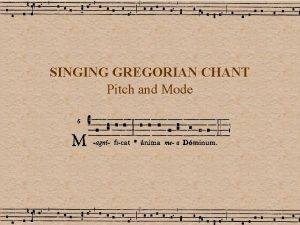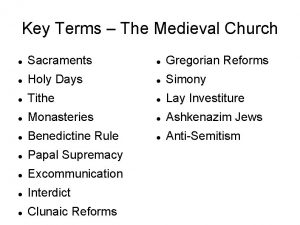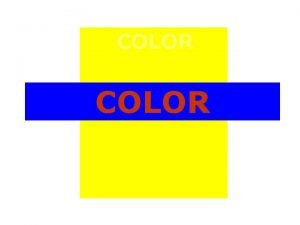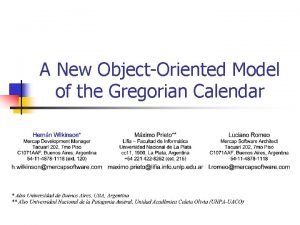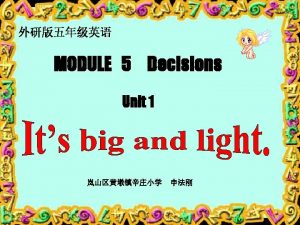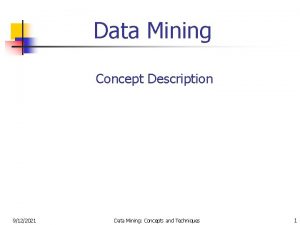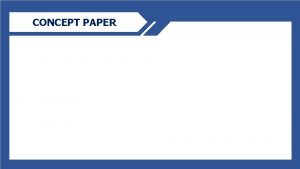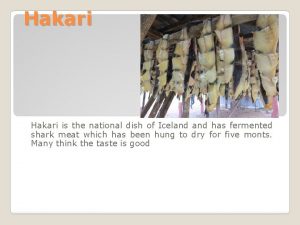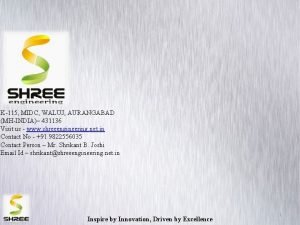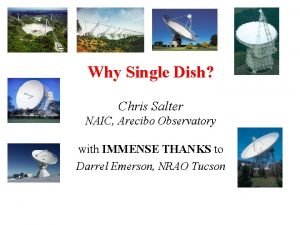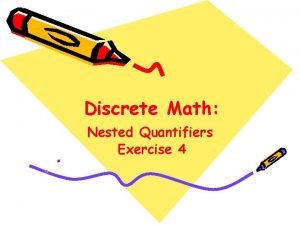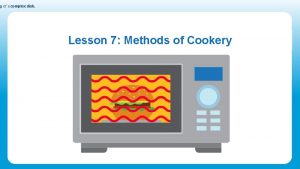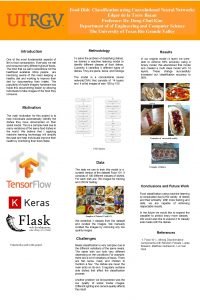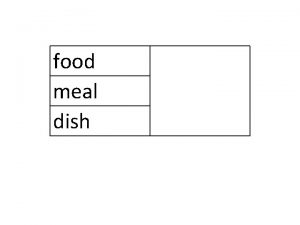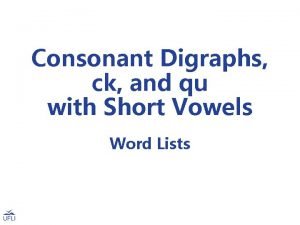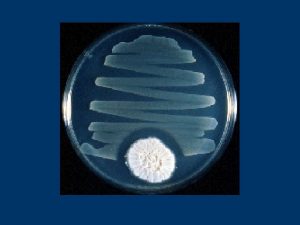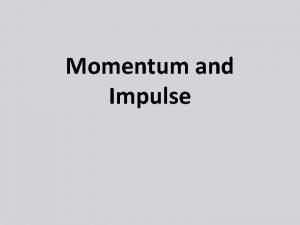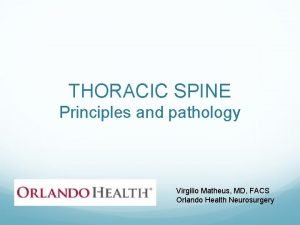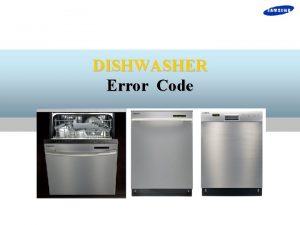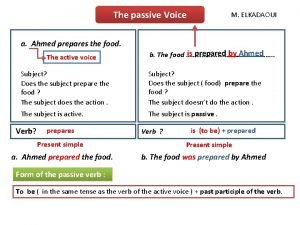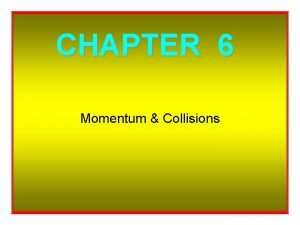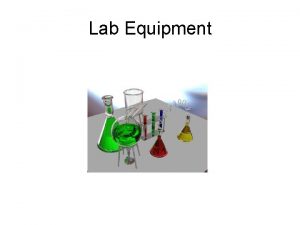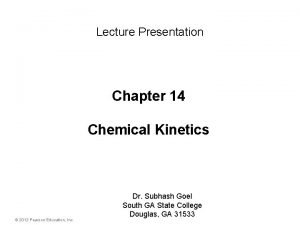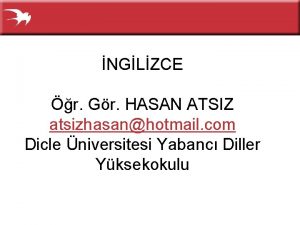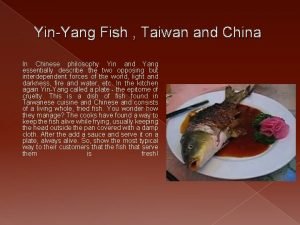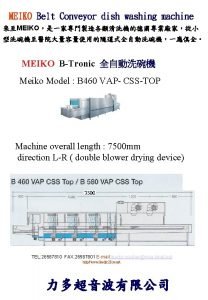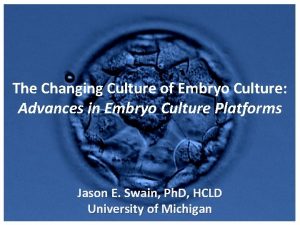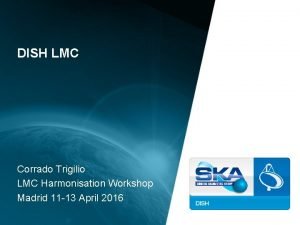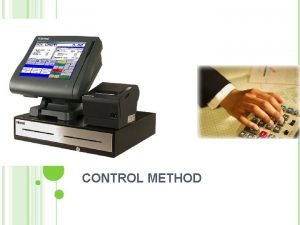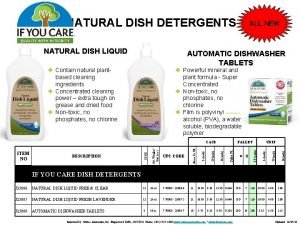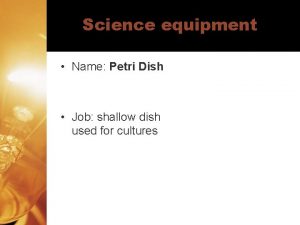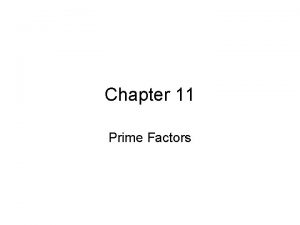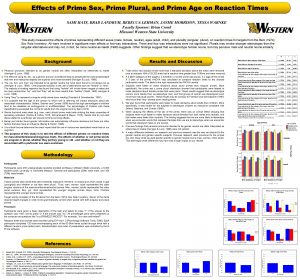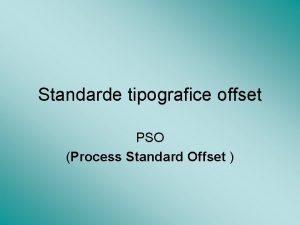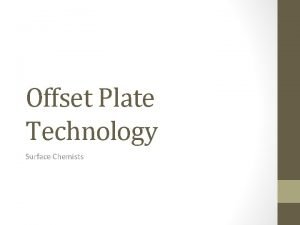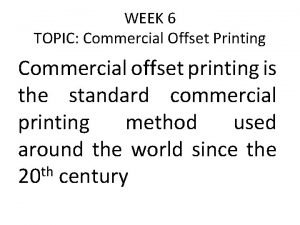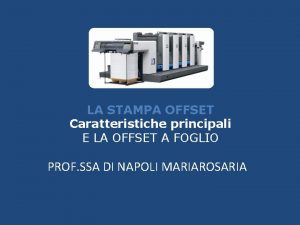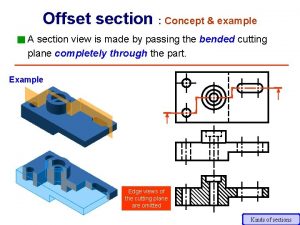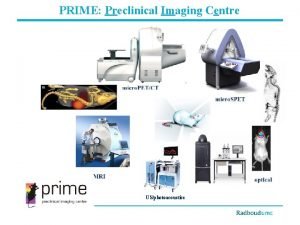DVAC CONCEPT DESCRIPTION OFFSET GREGORIAN DISH DVAC1 PRIME


















































- Slides: 50

DVAC CONCEPT DESCRIPTION: OFFSET GREGORIAN DISH — DVAC-1 PRIME FOCUS DISH — DVAC-2 卢雨 (Yu Lu), Vice Director @JLART Joint Lab. for Radio Astronomy and Technology Nov. 2011, Taejon Email. luyucti@hotmail. com

Outline Ø DVAC Design Principle Ø DVAC-1 Main Specifications Concept Design Main Specification Budget Ø DVAC-2 Specs Concept Design Specification Budget

DVAC Design Principle JLRAT propose two concept designs: • Dish Verification Antenna China #1 (DVAC-1) ---an offset Gregorian dish; • DVAC-2 --- an axis-symmetric dish (prime focus antenna). reflector

Design Principle Ø Excellent performance Ø Low cost Ø Ease of transportation and installation Ø Minimal routine maintenance Ø Long lifetime

DVAC CONCEPT DESCRIPTION: OFFSET GREGORIAN DISH — DVAC-1

Main Specifications for DVAC-1 Antenna Type Offset-Gregorian Antenna , Diameter 15 m Mount Type EL over AZ (AZ:Gear,EL: Screw) Frequency Band 0. 3 GHz ~ 10 GHz Frequency Band Switch Manner Switching Feeds within 30 s Surface Accuracy of Main Reflector Pointing Accuracy Antenna Aperture Efficiency (%) First Sidelobe Level £ 1. 2 mm RMS (at night, under low wind) 1. 25 mm RMS (Wind 7 m/s , ΔT=5ºC) 1. 75 mm RMS (Wind 20 m/s , ΔT=7ºC) 10 arcsec RMS (at night and no wind) TBC (at daytime, with wind) 55% -18 d. B

Concept Design and Manufacture Block Diagram of 15 Meter Antenna System

Concept Design -- Microwave Optical Design è Feed Design Operating frequency: 0. 3 GHz~10 GHz (33 octaves) two wide-band feeds (WBF) WBF advantages: Ø Bandwidth of several octaves; Ø Dual linear or circular polarization Ø Constant phase centre Ø Equal E- and H-plane beamwidth

Concept Design --- Microwave Optical Design è Feed Design Feed 1(0. 3 GHz ~ 1. 5 GHz ) and Feed 2(1. 5 GHz ~ 10 GHz ) (Eleven Feed) Frequency (GHz) Length×Width×Height (mm) Weight (kg) 0. 3~1. 5 1040× 350 20 1. 5~10 250× 120 8 Simulation Model

Concept Design --- Microwave Optical Design è Feed Design Subreflector Edge Taper: -9 ~ -15 d. B Illuminating range Radiation Patterns of Feed 1 at 0. 3, 0. 9 and 1. 5 GHz Illuminating range Radiation Patterns of Feed 2 at 1. 5, 6 and 10 GHz

Concept Design --- Structure Design Ø Single integrated main reflector Ø Minimal spar structure Ø Turning head design with a lead screw elevation actuator Ø Support and interchange mechanism for a PAF and 3 SPFs or 2 WBFs.

Concept Design ---Structure Design è Reflector Design — Main reflector ü Design 1: Aluminum sandwich structure Single aluminium panel Skins: 2 mm (upper)/2 mm (lower) in thickness, 2 m in width Skin and ribs are glued through negative pressure method on mould Surface accuracyσ≤ 0. 8 mm Rib Configuration

Concept Design (2) Structure Design è Reflector Design — Main reflector ü Design 2: Carbon fibre sandwich structure Single carbon fiber panel Carbon fiber skins: 1. 5 mm (top)/1. 5 mm (bottom) in thickness Polyurethane foam: in the middle Surface accuracyσ≤ 0. 8 mm

Concept Design ---Structure Design è Reflector Design — Back structure The backup structure is based on US TDP design with some modifications.

Concept Design ---Structure Design è Reflector Design — Subreflector Magnesium material, 30% lighter than aluminum alloy. Surface accuracy σ≤ 0. 25 mm

Concept Design ---Structure Design è Reflector Design — Feed Switch Mechanism

Concept Design --- Structure Design è Mount Design Elevation Part Azimuth Part Pedestal

Concept Design --- Structure Design è Mount Design — Azimuth part Ø Dual-motor anti-backlash drive Ø External gear bearing, easy to maintain Ø Seal cover is used to exclude dust and sand

Concept Design ---Structure Design è Mount Design — Elevation part A planetary reducer with a ball screw drive is used for the elevation part without a counterweight.

Concept Design --- Structure Design è Mount Design Summary Ø A flexible-axis drive technique is adopted for Az and EI encoder mechanism. Ø A double-layer ring structure is used for AZ cable wrap. Ø A modular design for all rotating parts. Ø A Line-Replaceable Unit (LRU) design is applied to reducer, motor, encoder and limit device, azimuth cable wrap, and elevation lock device. Not only for ease of replacement and maintenance, but also suitable for batch production.

Concept Design ---Structure Design Weight of Dish ITEM WEIGHT (aluminum, Kg) WEIGHT (carbon fibre, Kg) Reflector 7250 7050 Mount 11250 Total weight 18500 18300

Concept Design --- Simulation è Structural Mechanics Analysis Ø Finite Element Model EL=10° EL=90°

Concept Design ---Simulation è Structural Mechanics Analysis Ø Reflector Surface Deformation by Gravity Best Fit Surface Error by Gravity EL=10° EL=90°

Concept Design ---Simulation è Structural Mechanics Analysis Ø Reflector Surface Deformation by Wind EL=10° EL=90°

Concept Design --- Analysis è Structural Mechanics Analysis Ø Reflector Surface Deformation by Temperature Difference 2°C 5°C 7°C Surface Error (r. m. s. mm) 0. 081 0. 203 0. 284

Concept Design --- Analysis è Structural Mechanics Analysis Ø Strength Analysis Elevation (degree) Wind speed (m/s) Gravity Max. stress (MPa) Safety coefficient 10° 20 √ 77. 4 4. 5 54° 20 √ 80. 3 4. 3 90° 20 √ 150 2. 3 54° 45 √ 150 2. 3

Concept Design è Structural Mechanics Analysis Ø Conclusion The analysis results show that the structural performance of antenna can probably meet the SKA requirements

4. Concept Design --- Servo Control Design Ø Antenna control unit (ACU) Ø Feed Control Ø Antenna drivers Ø Motors Ø Power distribution devices Ø Encoders Ø Local control pendant Ø Limit and safety protection device

Main Specification Budget --- Full Radiation Pattern Calculation f=0. 3 GHz f=1. 5 GHz f=6. 0 GHz f=10 GHz

Main Specification Budget --- Full Radiation Pattern Calculation Frequency (GHz) First sidelobe (d. B) 0° plane 90° plane 0. 3 (-22. 77, -21. 87) (-25. 51, -25. 51) 1. 5 (-21. 22, -20. 38) (-24. 37, -24. 37) 6 (-21. 21, -20. 13) (-24. 64, -24. 64) 10 (-21. 35, -19. 73) (-24. 24, -24. 24) First sidelobe: less than -19. 73 d. B

Main Specification Budget --- Antenna Aperture Efficiency Frequency (GHz) η 1 η 2 η 3 η 4 η 5 η(%) 0. 3 0. 71 1 0. 95 0. 98 66 0. 9 0. 76 1 0. 95 0. 98 71 1. 5(feed 1) 0. 78 0. 99 0. 95 0. 98 72 1. 5(feed 2) 0. 77 0. 99 0. 95 0. 98 71 6 0. 81 0. 95 0. 98 69 10 0. 81 0. 78 0. 95 0. 98 59 Antenna aperture efficiency: more than 59%

Main Specification Budget ---Pointing accuracy Error source (r. m. s. ) Error (arcsec) Residual error (arcsec) Modification method Verticality of the azimuth axis 10 3 Pointing model Azimuth-Elevation nonorthogonality 3 3 - Azimuth bearing run-out 4 4 - Adjust error of sub-reflector and feed 3 3 - Gravity deformation 11 2 Lookup table Thermal deformation <1 <1 Wind deformation - - Servo error 5 5 Uncertain error 3 3 Total error (RMS) 8. 7 arcsec (at night and windless)

DVAC CONCEPT DESCRIPTION: PRIME FOCUS DISH — DVAC-2

DVAC-2 Specifications Antenna Type Prime Focus Antenna, Diameter 15 m Focal length / Diameter ratio (f/D) 0. 4 Mount Type AZ-EL-POL mount (AZ, POL:Gear,EL: Screw) Frequency Band 0. 3 GHz ~ 10 GHz Frequency Band Switch Manner Switching Feeds within 30 s Surface Accuracy of Main Reflector Pointing Accuracy Antenna Aperture Efficiency (%) First Sidelobe Level £ 1. 1 mm RMS (at night, under low wind) TBC(at daytime, with wind) 10 arcsec RMS (at night and no wind) TBC (at daytime, with wind) 50% -20 d. B

DVAC-2 Concept Design and Manufacture

DVAC-2 Concept Design --- Microwave Optical Design f=0. 3 GHz f=1. 5 GHz f=6. 0 GHz f=10 GHz

DVAC-2 Concept Design ---Structure Design Old Design New Design Ø Single Panel Ø Simple Structure Ø Light Weight Ø Low Cost Ø Fast Installation

DVAC-2 Concept Design ---Structure Design Ø Single integrated main reflector Ø Minimal spar structure Ø Turning head design with a lead screw elevation actuator Ø Four support legs and interchange mechanism for a PAF and 3 SPFs or 2 WBSPFs.

DVAC-2 Concept Design ---Structure Design è Reflector Design Ø Main reflector Ø Back structure Ø Feed switch mechanism

DVAC-2 Concept Design ---Structure Design è Reflector Design — Back structure

DVAC-2 Concept Design ---Structure Design è Mount Design Elevation Part Polarization Part Azimuth Part Pedestal

DVAC-2 Concept Design ---Structure Design è Mount Design — Azimuth part Ø Dual-motor anti-backlash drive Ø External gear bearing, easy to maintain Ø Seal cover is used to exclude dust and sand

DVAC-2 Concept Design ---Structure Design è Mount Design — Elevation and polarization part Elevation part: a planetary reducer with a ball screw drive Polarization part: a disc bearing

DVAC-2 Concept Design --- Structure Design è Mount Design Ø A flexible-axis drive technique is adopted for Az and EI encoder mechanism. Ø A double-layer ring structure is used for AZ cable wrap. Ø A modular design for all rotating parts. Ø A Line-Replaceable Unit (LRU) design is applied to reducer, motor, encoder and limit device, azimuth cable wrap, and elevation lock device. Not only for ease of replacement and maintenance, but also suitable for batch production.

DVAC-2 Concept Design Weight of Dish ITEM WEIGHT (aluminum, Kg) WEIGHT (carbon fibre, Kg) Reflector 6800 6550 Mount 12500 Total weight 19300 19050

DVAC-2 Specification Budget --- Full Radiation Pattern Calculation f=0. 3 GHz f=1. 5 GHz f=6. 0 GHz f=10 GHz

DVAC-2 Specification Budget --- Full Radiation Pattern Calculation Frequency (GHz) First sidelobe (d. B) 0° plane 90° plane 0. 3 (-28. 2, -28. 2) 1. 5 (-28. 5, -28. 5) 6 (-28. 7, -28. 7) 10 (-28. 9, -28. 9) First sidelobe: less than -28 d. B

DVAC-2 Specification Budget --- Antenna Aperture Efficiency Frequency (GHz) η 1 η 2 η 3 η 4 η 5 η(%) 0. 3 0. 74 1 0. 95 0. 98 69 0. 71 1 0. 95 0. 98 66 1. 5(feed 1) 0. 70 1 0. 95 0. 98 65 1. 5(feed 2) 0. 72 1 0. 95 0. 98 67 6 0. 70 0. 93 0. 95 0. 98 60 10 0. 68 0. 81 0. 95 0. 98 51 Antenna aperture efficiency: more than 50%

DVAC-2 Specification Budget ---Pointing accuracy Error source (r. m. s. ) Error(arcsec ) Residual error(arcsec) Modification method Verticality of the azimuth axis 10 3 Pointing model Azimuth-Elevation nonorthogonality 3 3 - Polarisation-Elevation non-orthogonality 3 3 Azimuth bearing run-out 4 4 - Adjust error of feed 3 3 - Gravity deformation 9 2 Lookup table Thermal deformation <1 <1 Wind deformation - - Servo error 5 5 Uncertain error 3 3 Total error(RMS) 9. 2 arcsec(at night and windless)

Thank You!
 Gregorian chant modes
Gregorian chant modes Clunaic
Clunaic Sacred gregorian chant
Sacred gregorian chant Gregorian chant middle ages
Gregorian chant middle ages Gregorian chant timbre
Gregorian chant timbre Gregorian calendar 2019
Gregorian calendar 2019 Listen and repeat clipart
Listen and repeat clipart Jeff bezos prime video prime
Jeff bezos prime video prime Concept description in data mining
Concept description in data mining Relevance analysis in data mining
Relevance analysis in data mining Concept paper as an extended definition
Concept paper as an extended definition Hakari dish
Hakari dish Dish tv
Dish tv Dish
Dish Dish salters
Dish salters Plating starch dishes
Plating starch dishes Jai jawan canteen
Jai jawan canteen Functions of a beaker
Functions of a beaker Petri dish function
Petri dish function Plural and singular words
Plural and singular words Let t(x y) means that student x likes cuisine y
Let t(x y) means that student x likes cuisine y Morphology of cells in culture
Morphology of cells in culture Complex dish
Complex dish Dish classification
Dish classification Satrover dish
Satrover dish Four types of salad
Four types of salad Food meal dish exercises
Food meal dish exercises C k qu
C k qu Menu one dish meal
Menu one dish meal Fleming petri dish
Fleming petri dish Dish costing sheet
Dish costing sheet When a dish falls will the impulse be less
When a dish falls will the impulse be less Dish syndrome
Dish syndrome How to answer what's your favourite food
How to answer what's your favourite food Model name
Model name Cam card dish tv
Cam card dish tv What is a petri dish
What is a petri dish Passive voice structure chart
Passive voice structure chart Dish tech hub
Dish tech hub Whats momentum
Whats momentum Used to transport hot beakers
Used to transport hot beakers Petri dish - tradução
Petri dish - tradução Specimen dish
Specimen dish Salmon çoğul hali
Salmon çoğul hali Yin yang fish dish
Yin yang fish dish Dish curtin
Dish curtin Dish food
Dish food Conveyor belt dishwasher
Conveyor belt dishwasher Embryo slide culture dish
Embryo slide culture dish Dish new madrid
Dish new madrid Ceo escalation
Ceo escalation
